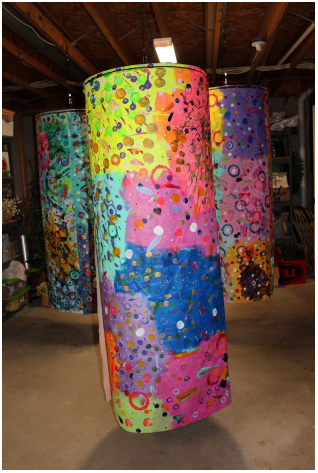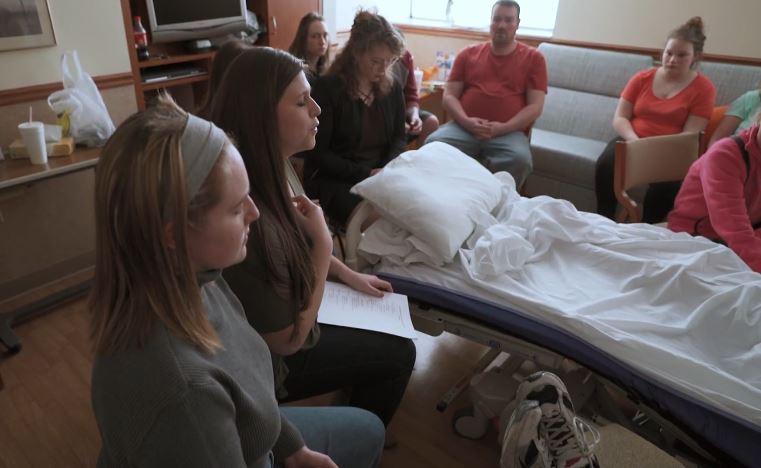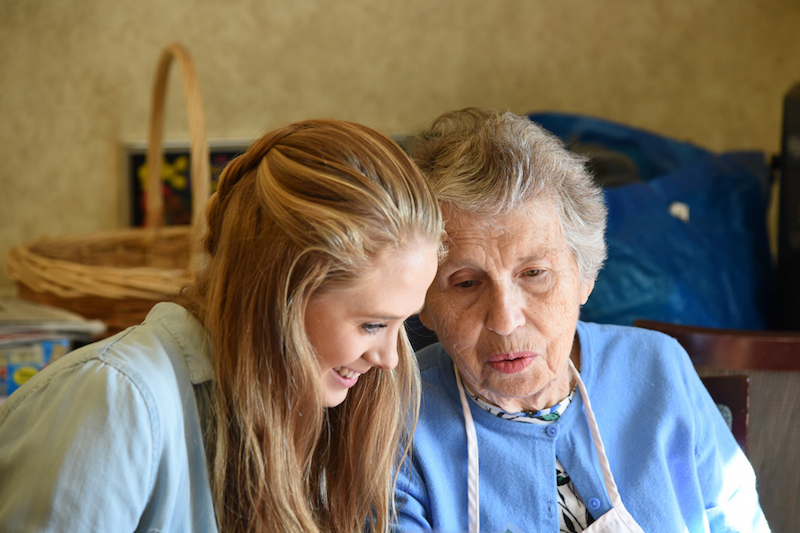A Daughter’s Reflection on OMA: Seeing My Mother, the Artist

My mother was an artist. For as long as I can remember, she painted or drew. There were periods when she didn’t because of family and work, but it was always a central part of her life. She actually was offered a prestigious scholarship after high school to attend the New Bauhaus in Chicago, though she chose not to pursue it.
In retirement, she joined a group of women who had all been professional or semi-professional artists, to participate in uninstructed art classes with models. (Sometimes landscapes were the “models”). This continued for many years, until each of the group members moved away and, especially, after Mother began to experience cognitive issues.
My mother started participating in OMA in March of 2014. I have observed a number of OMA sessions. The warmth and kindness exuded by the staff and the volunteers create a safe space for artistic expression. There is something unique about the way the volunteers work with the individual artists. I can see in my mother’s case that she is her artistic self at OMA. There is something special about the OMA environment, and how it includes the recognition of my mother’s individuality. There is a personal “kit” for her always at the ready, for instance, should she just want to paint rather than do the specific project that week.
“When we discuss her art, it is as if she does not have dementia. She is self-confident and focused. When I see my mother as an artist, I feel like her daughter, rather than her caregiver.”
All artists work one-on-one with a volunteer, which encourages creativity and calm. I like the way there are two pairs at each table, so that at the same time that my mother and the other artists have their own volunteers, they also share their workspace with another pair, as well as with all of the other pairs in the room. The way OMA staff members circulate during the sessions to offer additional assistance and to comment on the works of art also helps to create a sense of community, too. OMA has enabled my mother to reconnect to her identity as an artist, which promotes her sense of self. When I watch my mother work in an OMA session, I am fascinated by the look of concentration on her face, by the way she evaluates her work as it evolves, figures out what she wants to do, intuitively, and then does it, with the help of the volunteers. As I observe her, I realize that she’s still got it.

This is a great blessing, indeed, and it is also thought-provoking in terms of trying to define the self, especially within the context of dementia. My mother’s participation in OMA allows me to relate to my mother once again as an artist — to be able to see her as autonomous and to rediscover her creative core.
When we discuss her art, it is as if she does not have dementia. She is self-confident and focused. When I see my mother as an artist, I feel like her daughter, rather than her caregiver.
I have been and continue to be amazed at my mother’s ability to reconnect with her creative self, which means that she is still capable of discernment, judgment, observation and analysis, at least to some extent — and that she still retains her intuition, the most mysterious of all faculties of cognition, according to Plato, since it includes and supersedes all the others. This is heartening, and makes me think that dementia is not necessarily a dissolution or loss of the self, even when so much else has changed.
“My mother’s participation in OMA allows me to relate to my mother once again as an artist — to be able to see her as autonomous and to rediscover her creative core.”
My mother talks a lot about OMA and her artwork created in the program. Sometimes I ask her about it, but other times she mentions it, which is remarkable since her short-term memory is not very good anymore. She likes to evaluate and reevaluate her pieces with a critical eye, pointing out what she likes or dislikes. She has some of her work up on the wall in her room, and she likes to have me bring her the pictures so she can look at them from close up. Sometimes she’ll ask me to remove a picture from the wall and hang another one in its place.My mother was an artist, and she is an artist. OMA enables my mother to be herself. And for that, I am forever grateful.


